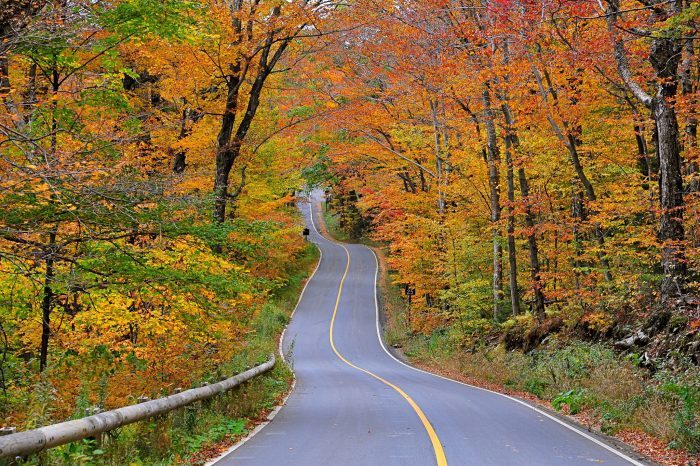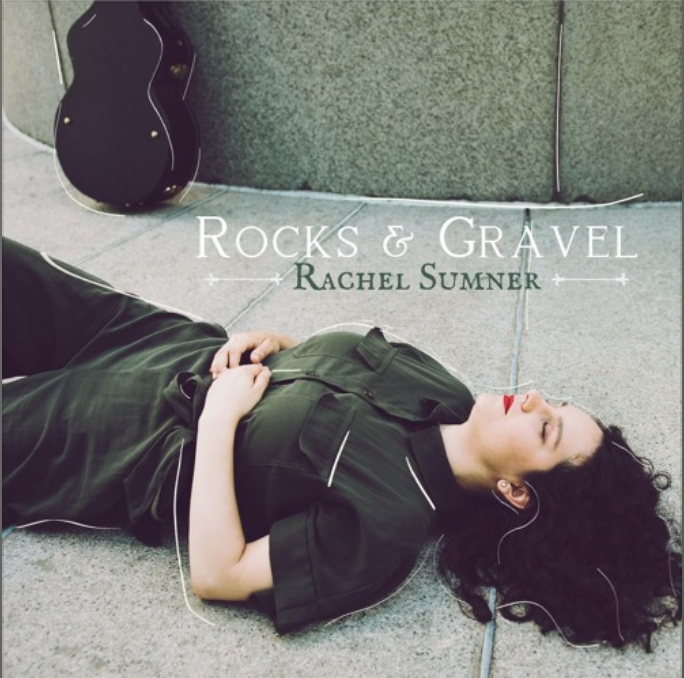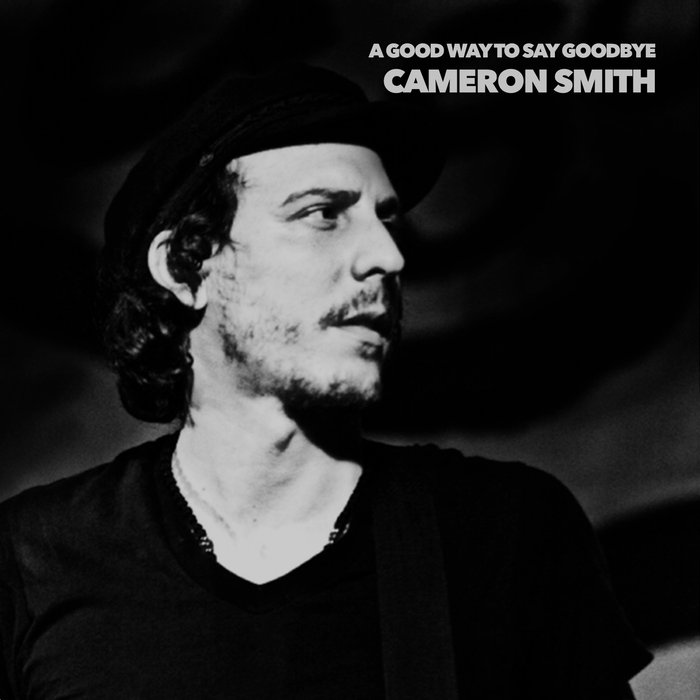The Year’s Best Coverfolk Albums (2019)
Tributes, Tradfolk, Covers Compilations & more!

They say the turning of the year is symbolic, and to use it so: for reflection, a slate to be cleaned and set, restored, upon the walls of our living spaces. In our time of need, there is solace, and a second chance built into our calendrical lives.
And in the long, quiet hours to and from the adrenalin crises of our lives, music is our guide. In the heartbreak rages and the long walks, it serves us. In the peace of night, it sustains and soothes. The discovery of it is joyful. And the knowing of it, when it is at its best, and our need is greatest, is sublime.
Such is our mandate, and our mission here: the comforting under the strange; the song of our hearts revealed or transformed. Coverage. The roots and branches of the music of the community, and the heart, in bloom, reborn.
It’s hubris, perhaps, that brings us here – and no small bit of sheer stubbornness, to keep us coming back, for the past month and a bit, since our long, long hiatus through the majority of 2019. We are humbled, practically imposters, after being away from the music for so long, and only so recently returned, in laying claim to anyone’s top ten, or five, or one…except our own.
For although we were gone, the music still sustained us. And here it is, at year’s end, the best still spinning on the tip of our tongues and ears.
It’s good to be back with our 8th annual Year’s Best Coverfolk collection. As always – and perhaps more than ever – it is neither definitive nor comprehensive, merely a celebration of the albums that have stuck, or stunned, or both, in a year where music was more important than ever.
It is a list made with love and luck – at 35 songs, and almost two dozen albums, the soundtrack of our long hours of need and desire.
Enjoy it. Add its gems to your collections, the better to support the artists who serve our souls. Come back, soon, for our celebration of the best coverfolk singles of 2019.
And may your new year burn bright with possibility, too.
The Year’s Best Covers EP
+ Emily Mure, Sad Songs and Waltzes
+ Rachel Sumner, The Things You Forgot
+ Margaret and Gregory, Songs for Loving and Dying
+ Moonlamb Project, Derivative Blues
The five tracks on The Things You Forgot, our tied-for-first Covers EP of the Year from Boston-based roots singer-songwriter Rachel Sumner, enjoyed a slow release throughout the year, giving us time to steep in each song as it came, from the light cowgirl bluegrass of Josh Ritter’s Temptation of Adam in April to a surprisingly faithful layered-vox-and-strum Elliott Smith cover in October; by the time the full set came together with a stunningly sweet Simple Twist of Fate four weeks ago, we were already deeply in love. The songs on The Things You Forgot are as unforgettable in version as they are in the originals; as a full disc, their compositional potency comes into focus thanks to clear-as-a-bell production and performance, each precious note sung and strummed a single, deliberate stroke. The end result is a simple masterpiece, still lingering long after we first featured it in November’s New Artists, Old Songs mailbag review. Though Sumner has roots in both the bluegrass and classical worlds, this is true-blue singer-songwriter folk through and through, too: achingly clear, and wide open to the world, with twang and tenderness enough to carry us through the fire of an unusually difficult year on its own.
Twinned honors go to Emily Mure, another solo artist we’ve touted here before for her delightful covers of Cake’s Mexico and Bowie’s As The World Falls Down. But Sad Songs and Waltzes catapults her to the top of any list: from the first warm chord to the rich wistful harmonies floating in air, the EP – named after a Willie Nelson classic that melts like butter in this songstress’ supple hands and voice – offers an enveloping journey through the transformed songbook of modern radio, sweet and subtle and oh so cool. It’s the tender covers album Kate Wolf would have made, if she had been born a half century later, and raised on Radiohead, Wilco, and The Cranberries, all of whom are covered softly and well; even Coldplay’s Yellow, which has been so over-covered in the last decade, takes on new shape and meaning here, once captured in Mure’s capable, enrapturing gaze. Listen deeply, and be comforted anew.
Honorable mention this year goes to Margaret and Gregory, whose small, homespun, oddly diverse lo-fi folk-and-indie-rock Songs for Loving and Dying takes on Dylan, Gillian Welch, John Prine, AP Carter, and a Mr. Rogers classic: a short ride, yet wide ranging, both full of death and life-affirming; the imperfections are delightful, too, making for a delicate yet definitive celebration of the bedroom antifolk subgenre. And although it, too, is amateur at heart, Belgian’s Moonlamb Project – a duo – has a great concept in Derivative Blues, a five-track released on Bandcamp back in May. There’s nothing polished here: raw grit, growling accented vocals, and a grungy barroom guitar-and-harmonica blues mood lend sparse verisimilitude to tracks originally by Depeche Mode, Nick Cave, Tom Waits, Robert Plant, and gone-before-his-time Delta Bluesman Napoleon Washington, leaving us a potent reminder that the good stuff observes no boundaries.
- Emily Mure: No Surprises (orig. Radiohead)
- Rachel Sumner: Temptation of Adam (orig. Josh Ritter)
- Moonlamb Project: Personal Jesus (orig. Depeche Mode)
- Margaret and Gregory: Please Don’t Bury Me (orig. John Prine)
- Margaret and Gregory: Bury Me Under The Weeping Willow (orig. AP Carter)
The Year’s Best Covers Album
+ Ben Lee, Quarter Century Classix
+ S.T. Manville, Somebody Else’s Songs
+ Unwoman, Uncovered Volumes 4 & 5
+ Corb Lund, Cover Your Tracks
+ Greg Laswell, Covers II
+ Angel Black-Orchid, Classic Beauty
+ Becky and Cloud, Decade
Relatively few full-length mass-market covers albums hit the radar this year; as such, our Year’s Best Covers Albums this year come sourced primarily from deep dives into Bandcamp and Soundcloud, where the primacy of home recording, musicians-as-producers, and indie sensibility hold sway. But our by-a-nose favorite is one of the the exceptions: like us, Aussie indie pop rocker Ben Lee came to maturity amidst the alternative indie punk rock scene of the early nineties, even touring with Sebadoh in his late teens as part of his first band, and Quarter Century Classix, his dreamy snowed-in post-pop celebration of the soundtrack of our respective youths – Fugazi, Dinosaur Jr., Guided By Voices, Pavement, and Sonic Youth among them – offers a surprisingly tender, eminently professional retelling of songs obscure yet seminal to those who share our origin story. Session play from William Tyler and a guest spot from Petra Hayden only serve to cement Lee’s collection’s place in the great pantheon of honest, poignant tributes to a generation’s lost youth and deep influence. And anyone unsure about whether this is folk need only check out his Daniel Johnston cover, which hits the essential sound of Dylan and the Byrds square on.
Lee’s tribute stands strong against two other 2019 collections heavy with similar trends towards the interpretation of the loud and the electric in our category this year. The softer of these, ex-punk-rocker S. T. Manville‘s Somebody Else’s Songs, drops a dozen more modern pop punk tunes into hushed tones and a sparse, lower fidelity modality for a hazy acoustic ride through classics from Green Day, Jimmy Eats World, The Offspring and others; as we noted in November, it’s “pretty and pensive in performance”, and delightfully delicate from cover to cover, thanks to an understated approach: “quiet vocal and slow picking drone, with occasional light accents from accordion, banjo, and violin” still fill our ears, and serve us well.
The other end of the spectrum runs raucous, and broader in its range. Those who prefer their cover “folk” on the far edge of high stepping countrified barroom roots rock a la Wilco, Buddy Miller, or Steve Earle need look no farther than Canadian country roots artist Corb Lund, whose Cover Your Tracks – his first album in several years – is a bootkickin’ alt-country romp through some serious classics, most of which add twang and slide and otherwise hew relatively close to the energy of an unusually cohesive set of almost random originals – from Dylan and Lee Hazelwood to ACDC and, most oddly, Billy Joel’s It’s Still Rock and Roll To Me.
We could have put experimental acousto-electric cellist, producer, and composer Unwoman, aka San Franciscan steampunk singer-songwriter Erica Mulkey, in our EP category this year, simply on the strength of November 7-track release Just Go Away, with simply shines with glitchy drumtrack joy as it celebrates Blondie, Hole, Bowie, and more. But that smaller set was just a coda to something much, much greater: double album Uncovered Volumes 4 & 5, which covers 30 amazing soundscapes originally released and recorded for (and in many cases, chosen by) the artist’s Patreon and Bandcamp supporters over the past several years. It’s grand and at times even orchestral, but there’s little to skip through here: the set shows an artist with poise, balance, and a sense of the complex made real and personal, celebrating and worth celebrating at year’s end and beyond. And although it’s a little overly dramatic for our daily tastes, we’d be remiss in skipping San Diego singer-songwriter Greg Laswell, last seen on these pages over a decade ago for his cross-gender Cyndi Lauper cover, who returns to the world of coverage this year with Covers II – a dark folkpop piece, with thudding piano, stimulating strings, and the strong addition of co-vocalist Molly Jenson throughout, to capture our own darker moments.
Honorable mention even farther beyond the punk sourcebook goes to a pair of Bandcamp-only releases: Classic Beauty, an album of oft-covered, relatively faithful reproductions of 60s and 70s classics from self-admitted session singer and circus show collaborator Angel Black-Orchid that reminds us that authentic, brashy playback is its own form of apt tribute, and Decade, which offers well-articulated folk pop fare from French duo Becky and Cloud, celebrating their tenth anniversary with aptly titled covers album taking on a familiar indiefolk sourcebook head on: hits from Poison & Wine, Damien Rice, The Weepies and The Innocence Mission up against equally familiar songs from Dylan, Simon and Garfunkel, and The Beatles. Neither album is truly transformative, but both offer bright voices clearly articulated, bright song choices, and a brighter sound, thanks to production choices which trend towards faithful reproduction of songs generally framed in wider berth: it’s the buskers you’d miss your bus for, and that’s a good thing, too.
- Ben Lee: Get Me (orig. Dinosaur Jr.)
- Ben Lee: Speeding Motorcycle (orig. Daniel Johnston)
- S.T. Manville: She (orig. Green Day)
- Unwoman: Heroes (orig. David Bowie)
- Unwoman: I Love Rock and Roll (orig, Joan Jett)
- Greg Laswell ft. Molly Jenson: Something In My Heart (orig. Röyksopp)
- Corb Lund: They’re Hanging Me Tonight (orig. Marty Robbins)
- Corb Lund: Ride On (orig. ACDC)
- Angel Black-Orchid: Angel From Montgomery (orig. John Prine)
- Becky and Cloud: World Spins Madly On (orig. The Weepies)
The Year’s Best Tribute Album (multiple artists)
+ Various Artists, Come On Up To The House: Women Sing Waits
+ Mercury Rev ft. Various Artists, Bobbie Gentry’s The Delta Sweete Revisited
For a while there, it was looking like 2019 would be a bust for compilation tribute records, at least as far as our softer roots-and-folk focus would allow: Mojo magazine, usually a go-to source for genre-pushing compilations in tribute, stuck to originals; 2014 follow-up This Is the Town: A Tribute to Nilsson (Volume 2) turned up with Cheap Trick sounding like Cheap Trick, Martha Wainwright channeling the sixties, and even Mikaela Davis in hopping poprock flashiness; the recorded release of 2018’s live Joni 75: A Birthday Celebration concert came in far too slick; several micro-labels and collaboratives released underground tributes to outsider’s artist outsider artist Daniel Johnston after his death in early September, but they were all just as weird as the original.
Psychedelic moodmakers Mercury Rev‘s tribute to Bobbie Gentry’s countryfolk classic The Delta Sweete gets a nod here, and not in our single artist tribute category, primarily because of how dependent the album is on a wonderfully-selected set of track-by-track guest female indiefolk vocalists, including turns from Norah Jones, Vashti Bunyan, Hope Sandoval, Lucinda Williams and others worth hearing. Still, Bobbie Gentry’s The Delta Sweete Revisited, however wonderful, is genre-pushing, tenuously folk at best, even in its lighter moments, most notably Laura Marling’s tense, chiming, crescendoing dream of Refractions, and the soaring wall-of-gospel Beth Orton piece that follows; the rest sounds more like a remix of U2’s Achtung Baby as filtered through the majesty of both the Moody Blues and Thompson Twins production engineers. (Although that’s not bad, necessarily – the band pulls the whole thing off really, really well.)
Happily, Cover Me was on the ball when they covered Warren Zanes-produced tribute Come On Up To The House: Women Sing Waits twice this year: first in a short teaser post in August, then in a track by track five star review after the album’s release that claimed “instant classic” status for the record. They’re right, of course: it’s all good, and quite good at that, from end to end a solid, strong tribute to a well-deserved gravel-voiced crooner of the downtrodden, with some of our favorite moods and voices – Patty Griffin, Aimee Mann, Roseanne Cash, Iris Dement – familiar to this type of project on the roster, and truly a canon of coverage in homage overall. We’re especially loving the selections from newer artists, too: the simple grandeur of sister act Joseph’s title cut, which comes on so much more static, and then turns up so much more tense, when held up against Sarah Jarosz’ seemingly seminal cover of the same; Courtney Marie Andrews’ driving, high-countrified Downtown Train; Phoebe Bridger’s slow, mournful Appalachian-Celtic gospel hymn reinvention of Georgia Lee.
- Joseph: Come On Up To The House (orig. Tom Waits)
- Aimee Mann: Hold On (ibid.)
- Mercury Rev. ft. Laura Marling: Refractions (orig. Bobbie Gentry)
- Mercury Rev ft. Beth Orton: Courtyard (ibid.)
The Year’s Best Tribute Album (single artist)
+ Steve Earle, Guy
+ Sudhananda with Lucia Lilikoi, Golden Slumbers
+ Janileigh Cohen, Bird on a Wire
We figured Steve Earle‘s tribute to Guy Clark – a quickly-recorded and heartfelt tribute to one-time mentor and friend, and thus, in its way, a companion piece to his previous end-of-the-decade tribute, 2009’s Townes – was going to slam this category, as long as it didn’t go too hard for folk. Sure enough, though it certainly teeters on the edge in its louder, more bombastic tracks, the simply-titled Guy comes in loving, generous, gritty, and heartstrong in the end – a solid choice for those already invested in the world of No Depression, a high point in the alt-country roots range, and a fine reminder that Earle is still atop his own game.
Our runners-up lie not far behind, though vastly different in sound. First up: Golden Slumbers, a collection of Beatles covers originally intended to be instrumental lullabies, until long-haired project visionary, multi-instrumentalist, and long-time children’s music producer Sudhananda met Spanish vocalist Lucia Lilikoi. Slow and syrupy, recorded at 432 hertz for warmth, and driven throughout by classical-sounding layers of guitar, harp, and keys, Golden Slumbers comes across as a delicate contemporary folk album – not just for kids at all, but perfect for those looking to wind down at the end of day with something that aims to be perfect, and comes damn close, from a master mixer, engineer, producer, artist, and arranger who has previously worked with Maria Muldaur and Donovan.
Second, although its title points to but one of its subjects, we celebrate Janileigh Cohen‘s album Bird On A Wire, a tribute to Leonard Cohen and Bob Dylan – an odd pairing that works. Simple, quiet guitar (or, sometimes, piano) and sweet, aching vocals go back and forth among a second string of less-and-better-covered tracks from both songbooks, revealing range and a depth of understanding that closes a gap we never knew hid in our brains, unveiling the common underpinnings of two poet-lyricist masters with delicacy and care. It’s not complex, but it doesn’t have to be: If It Be Your Will has never felt more satisfied, or more brave; One Too Many Mornings has never sounded sadder.
- Steve Earle: Desperadoes Waiting For A Train (orig. Guy Clark)
- Steve Earle: Texas 1947 (ibid.)
- Janileigh Cohen: Abandoned Love (orig. Bob Dylan)
- Janiliegh Cohen: Avalanche (orig. Leonard Cohen)
- Sudhananda w/ Lucia Lilikoi: While My Guitar Gently Weeps (orig. The Beatles)
- Sudhananda w/ Lucia Lilikoi: Let It Be (ibid.)
The Year’s Best Tradfolk Collection
+ Tui, Pretty Little Mister
+ Thirty Pounds of Bone & Phillip Reeder, Still Everywhere They Went
+ Sam Amidon, Fatal Flower Garden
Appropriately sparse, almost atonal fiddle-and-banjo play hold sway on Pretty Little Mister, a raw collection from young old time duo Tui, whose transformation of the old sound and lyrics ring strong with timeless sorrow and Appalachian alliance. It’s short, but so are the songs; it’s authentic, to be sure, but in a familiar, intimate neo-traditionalist mode, learned through scholarship and close collaboration with Rhiannon Giddens and Dom Flemons of Carolina Chocolate Drops fame, just right for the modern tradfolk crowd that surrounds the likes of Anna & Elizabeth, Andrew Bird, and Sam Amdion, albeit with a few more instrumentals in the mix than we generally share and celebrate. No matter: those looking for their tradfolk to sound traditional, yet looking for something new and wonderful in the stark combination of voices and instruments, could easily stop and linger here for days.
The drowning sounds of creaking hull and deck, droning engine, surf, gulls, wind, and a passing Coast Guard helicopter on Still Everywhere They Went, a set of well-chosen traditional British fishing and maritime songs made modern and strange by performers and fellow university lecturers in ethnomusicology Johny Lamb (aka lo-fi recording artist Thirty Pounds of Bone) and Phillip Reeder, are as authentic as they come: originally recorded aboard a moving, working 1974 fishing boat out of Cornwall, the collection of eight songs – a “mini-album”, if anything, justifying a blur in this year’s category between long and short form releases – push the shanty form into its context, making for a unique yet wonderful journey not so much crossing past and present as collapsing them into deep, crowded, almost futuristic fathoms.
And speaking of Sam Amidon: though it’s hard for a four-track to compete with something so sprawling, his short EP release Fatal Flower Garden (officially released on 7″ vinyl) offers a small collector’s gem for year’s end: four perfect tracks, each on their own and altogether precious and fragile, warm and weary as anything. It’s been a few years since we last saw Sam, but this tiny teaser is a potent reminder that he is at the top of his game – and the top of the craft – as a vessel and interpreter: Amidon first arranged these songs for a concert in tribute to Smith’s Anthology of American Folk Music, and though they yaw wide, indeed, each is just perfect in its way, leaving us hopeful about the tradition and its continued survival through the respectful evolution of the masters among us. Bonus points: with a single exception – EP-ending instrumental Train on the Island, which churns fiddle wonderfully throughout – these songs would fit just perfectly alongside aching favorites from Bon Iver, Ray LaMontagne, Iron and Wine, and the rest of the moody indiefolk crowd; indiebloggers and radio runners, take note and spread the word.
- Tui: Went Up On The Mountain (trad.)
- Tui: Smoke Behind The Clouds (trad.)
- Thirty Pounds of Bone & Philip Reeder: The Unst Boat Song (trad.)
- Thirty Pounds of Bone & Philip Reeder: The Halfway Song (trad.)
- Sam Amidon: Spike Driver’s Blues (trad.)
The Year’s Best Mostly/Half-Covers Album
+ Rhiannon Giddens and Francesco Turrisi, There Is No Other
+ BAILEN, Mixtape
+ Nicolette Macleod, Love and Gold
Every year, we toy with collapsing this category, and just letting individual tracks come through in our collection of Year’s Best Singles. But the placement of covers up against original work is its own kind of tribute, and nowhere is this more evident than in our main honorees for this year’s half-covers albums – three artists, and/or artist collaborations, who approach the issue in entirely different ways.
First up: There Is No Other, from Rhiannon Giddens with pianist and percussionist Francesco Turrisi – an expert in the often-unacknowledged influence of Arabic and Middle Eastern music on the European “sound” – which together trace and recreate a common thread among a clean and fluid mix of songs, pulling from the Appalachian tradition and far beyond, to Nina Simone, opera, and more, plus two original songs that fit so perfectly among the old, you’d have to know them to identify them as other. The diversity of sources is enough to make There Is No Other a non-contender as a full covers or a truly traditional album – where it would have easily tied for top honors, to be sure – but it remains, as reviewers have said since its Spring release, a handbook for both the evolution of popular music, and the universality of folk, with banjo, frame drum, and cello settings, coupled with Giddens’ huge talent for song resurrection, making for something well worth celebrating everywhere.
Meanwhile, as promised in our previous celebration of their Holiday fare, BAILEN‘s Mixtape offers an aptly titled mix of album cuts, previously-unreleased originals, and four wonderful covers which together serve to map the influences of the NYC-based trio’s hard-to-categorize, vastly diverse sound: a wonderful and surprisingly faithful live Joni Mitchell cover, a stripped down song from Billie Eilish, a soft, dreamy, high-harmony-rich cover of The Sugarcubes’ Hit, and a June Taboresque take on Black Rebel Motorcycle Club, all of whom can be heard in the rich echoes of their folk-to-pop-and-back-again recordings and live shows. And finally, from across the pond: though its covers and originals stand out as heavily vocally-driven, and in many cases a capella through and through, the soundscape created by Glaswegian “singer/songwriter, sound-designer, performer & live improvised sound maker” Nicolette Macleod on April’s Love and Gold is exquisite and fully-formed, weaving traditional British Isle folksongs with her own compositions to create a rich tapestry of song that soars and swoops like birds in a landscape otherwise ominous and still.
- Rhiannon Giddens with Francesco Turrisi: Brown Baby (orig. Mahalia Jackson)
- BAILEN: Hit (orig. The Sugarcubes)
- BAILEN: Salvation (orig. Black Rebel Motorcycle Club)
- Nicolette Macleod: Swallow (trad.)
- Nicolette Macleod: She Moved Through The Fair (trad.)
Always ad-free and artist-centric, Cover Lay Down has been digging deep at the ethnographic intersection of folkways and coversong since 2007 thanks to the support of artists, labels, promoters, and YOU. So do your part: listen, share, and above all, follow links to purchase the music you love, the better to keep the arts – and the artists – alive.
And if, in the end, you’ve got goodwill to spare, and want to help keep the music flowing? Please, consider a New Year’s contribution to Cover Lay Down. All gifts go directly to bandwidth and server costs; all donors receive undying praise, and a special blogger-curated gift mixtape of well-loved but otherwise unshared covers from 2018.
1 comment » | Best of 2019, Emily Mure, Rhiannon Giddens, Sam Amidon, Tradfolk, Tributes and Cover Compilations








 My brothers would come, but they live in other countries; he’s an only child, and his cousins live too far. He tends to avoid the other residents – they are, after all, a decade or more older than him on average, and he doesn’t identify with their needs or outlook, nor with their acceptance of what they can and cannot do for themselves.
My brothers would come, but they live in other countries; he’s an only child, and his cousins live too far. He tends to avoid the other residents – they are, after all, a decade or more older than him on average, and he doesn’t identify with their needs or outlook, nor with their acceptance of what they can and cannot do for themselves.  I’m a lot closer to my father than I used to be – even as the list of things my father used to be grows longer every week. But I’m fighting for balance, too. For years, I gave Saturdays to the children; now, just as the specter of college and adulthood begins to blossom in them, I choose to give my father the time I used to save for us. And it matters. To become my father’s lists, his agendas, his shopping cart guide, I have had to take a leave of absence from the adventures we used to take Saturdays, when the kids were small.
I’m a lot closer to my father than I used to be – even as the list of things my father used to be grows longer every week. But I’m fighting for balance, too. For years, I gave Saturdays to the children; now, just as the specter of college and adulthood begins to blossom in them, I choose to give my father the time I used to save for us. And it matters. To become my father’s lists, his agendas, his shopping cart guide, I have had to take a leave of absence from the adventures we used to take Saturdays, when the kids were small.  Cars generally represent freedom or power, control or escape; the ability to get the hell out, or to come back home again. But just as that one friend with a truck knows you’ll call him up for help on moving day, soft songwriters know that the car can be the chain that pulls you down, too: the enabling tool, the thief of time.
Cars generally represent freedom or power, control or escape; the ability to get the hell out, or to come back home again. But just as that one friend with a truck knows you’ll call him up for help on moving day, soft songwriters know that the car can be the chain that pulls you down, too: the enabling tool, the thief of time.  A buzzing cacophony of acoustic instruments from many lands (Kaval, Gadulka, Banjo and an upright acoustic bass) drag a dark song three fathoms deeper in this beautiful pseudo-Balkan transformation of 17 year old freakpop sensation Billie Eilish’s
A buzzing cacophony of acoustic instruments from many lands (Kaval, Gadulka, Banjo and an upright acoustic bass) drag a dark song three fathoms deeper in this beautiful pseudo-Balkan transformation of 17 year old freakpop sensation Billie Eilish’s  Tony Halchak’s take on this old, bouncy Bobby McFerrin hit could have been a one-trick pony – a simple slow-down of an upper, a common mechanism of coverage that by lyrical definition generally turns cheer and release to worry and crease, revealing depth and often irony in the vocals. But there are gems in this approach (Johnny Cash’s Hurt comes to mind, as does Ryan Adams’ Wonderwall) and this cover – which comes off of the Coal Country, PA singer-songwriter’s fourth full-length record, transcends and delivers, forcing us into it its inevitable reversal naked and whole, with whispered vocals and dank, strung-out lullaby arrangement, all slow, haunting keys and steady heartbeat strings. (The accompanying
Tony Halchak’s take on this old, bouncy Bobby McFerrin hit could have been a one-trick pony – a simple slow-down of an upper, a common mechanism of coverage that by lyrical definition generally turns cheer and release to worry and crease, revealing depth and often irony in the vocals. But there are gems in this approach (Johnny Cash’s Hurt comes to mind, as does Ryan Adams’ Wonderwall) and this cover – which comes off of the Coal Country, PA singer-songwriter’s fourth full-length record, transcends and delivers, forcing us into it its inevitable reversal naked and whole, with whispered vocals and dank, strung-out lullaby arrangement, all slow, haunting keys and steady heartbeat strings. (The accompanying  So many covers of Between The Bars have appeared on these pages in the last few years, especially from female artists such as
So many covers of Between The Bars have appeared on these pages in the last few years, especially from female artists such as  Young Texan duo-plus-collaborators
Young Texan duo-plus-collaborators  A full-sized debut release with a simple premise – pop punk favorites from The Offspring, Bad Religion, Green Day and more turned down into a wash of layered, lo-fi acoustic takes – the eleven tracks of
A full-sized debut release with a simple premise – pop punk favorites from The Offspring, Bad Religion, Green Day and more turned down into a wash of layered, lo-fi acoustic takes – the eleven tracks of  Fans of heavy, high-production folk-rock-pop fusion will just love the new turn from polymath
Fans of heavy, high-production folk-rock-pop fusion will just love the new turn from polymath  There’s more than a hint of freakfolk vibe in Cameron Smith’s creaky, lugubrious update of old Leonard Cohen chestnut The Traitor, as if the eerie sound of a bowed saw was bound to come out of the speakers any moment; the hollow sounds of Dylan and the ages ring in harmonica, organ, and slow strum for the Doom Ghost cover, too. The raw, minimalist tracks come from March release
There’s more than a hint of freakfolk vibe in Cameron Smith’s creaky, lugubrious update of old Leonard Cohen chestnut The Traitor, as if the eerie sound of a bowed saw was bound to come out of the speakers any moment; the hollow sounds of Dylan and the ages ring in harmonica, organ, and slow strum for the Doom Ghost cover, too. The raw, minimalist tracks come from March release  Finally, meet
Finally, meet 
